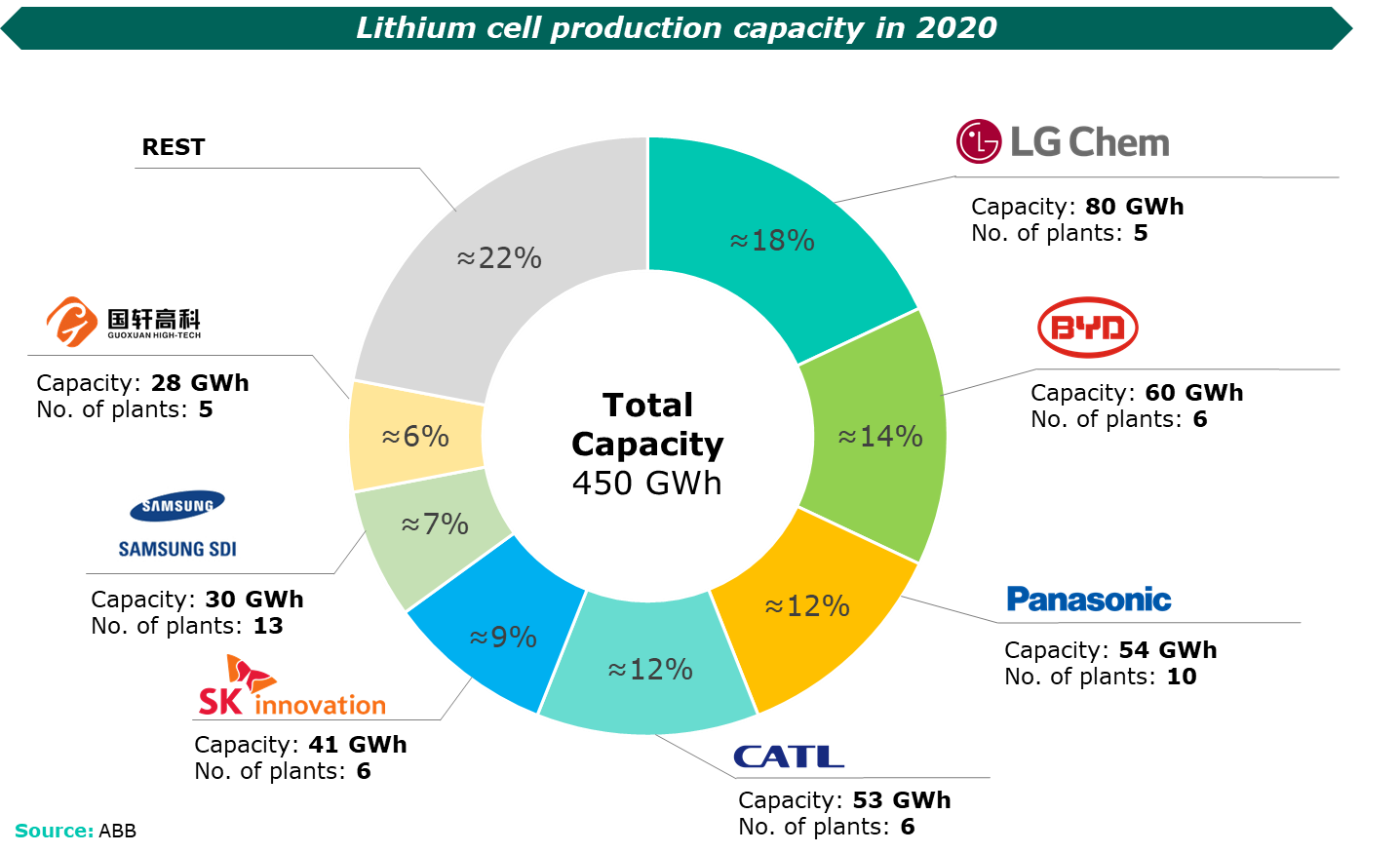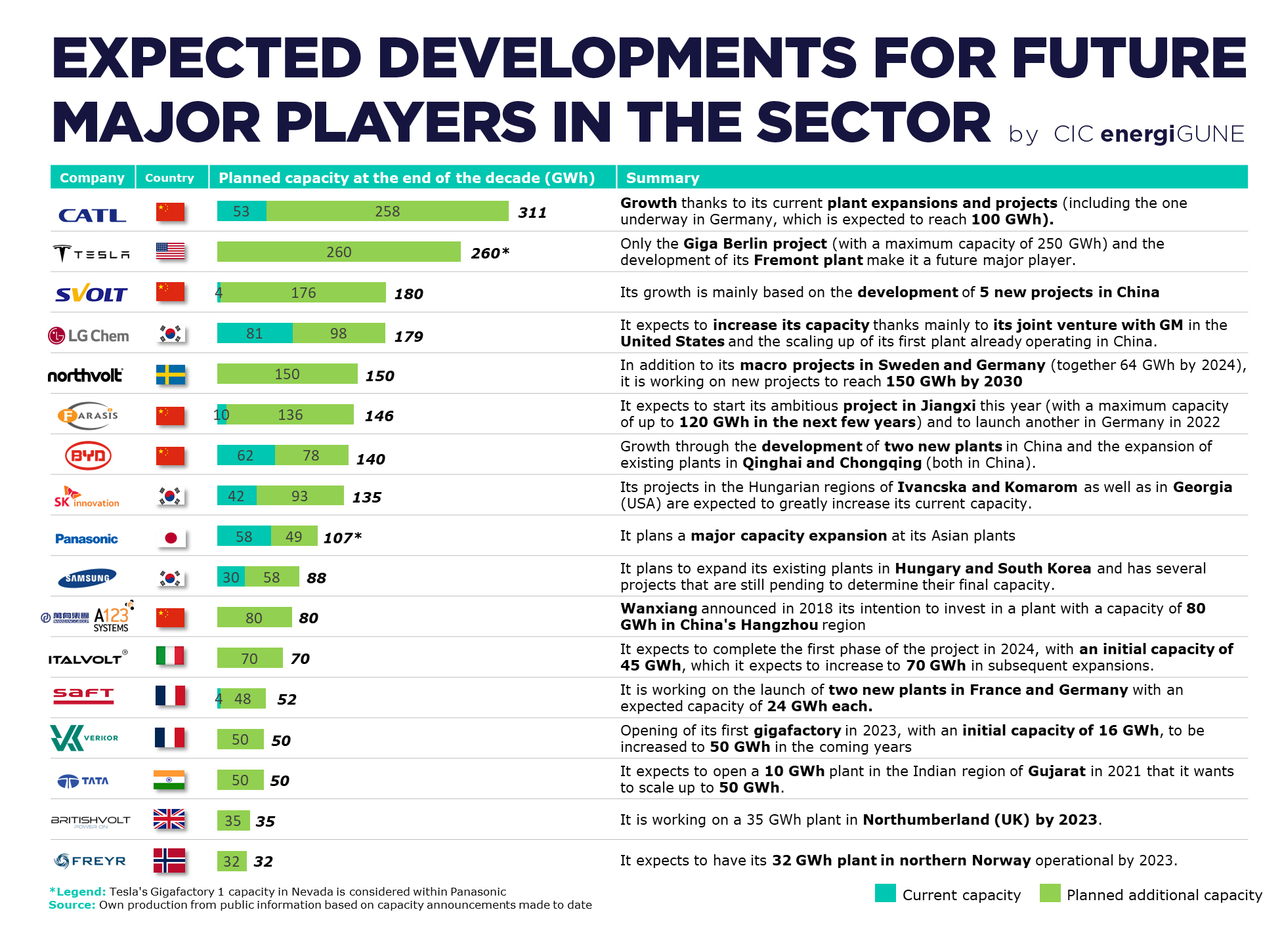 19 oktober 2021, 11:14
19 oktober 2021, 11:14
|
#1
|
|
Secretaris-Generaal VN
Geregistreerd: 18 mei 2005
Locatie: Limburg
Berichten: 50.235
|
 Geplande "batterijcapaciteit" tegen 2030, tabel top 17.
Geplande "batterijcapaciteit" tegen 2030, tabel top 17.
Een Spaanse studie heeft de geplande capaciteit samengevat van de grootste spelers: (tabel onderaan)
Citaat:
https://cicenergigune.com/en/blog/bi...factories-race
WHO ARE THE BIG PLAYERS IN THE GIGAFACTORIES RACE?
Business Business Electrochemistry
As we already mentioned in previous posts in our blog, large regions such as Europe (including Spain) or North America are making a strong commitment to the industry associated with gigafactories, with the aim of positioning themselves as hubs of reference in the battery sector; an industry with high impact and future potential.
Many of the current projects planned and analyzed, both in Europe and North America, are supported by some of the leading companies in the development of cell technologies. In many cases, these companies are of Asian origin, mainly due to the greater development and current dominant position of Asia and its companies within the industry.
Not surprisingly, if we analyze the recent ranking published by ABB of the cell manufacturing companies with the greatest capacity, we can see that, among the top 20, there is only one non-Asian company (the French company SAFT). The rest are from the aforementioned continent, all of them distributed in three countries that have led the bet on this industry in recent years: South Korea, China and Japan.
The asian giants
In 2020, more than 75% of the battery cell production capacity was distributed among 7 large companies, all of them from the Asian continent distributed in the three countries mentioned above. These companies are, nowadays, the major references in the sector, leading, through their capacity and technology, the development of the industry hand in hand with large OEMs to which they supply their technological solutions.

(.....)
The coming future
As we can see, the club of prominent players in the battery cell market is expecting changes and "new members" in the coming years (especially those coming from Europe, from which ambitious new announcements can still be expected).
Although it is yet to be seen how many of the planned and ongoing projects (as well as possible new initiatives to be launched by the aforementioned companies or other new players) will develop, it is clear that no one wants to be left out of the distribution of this market.
For this reason, the 2020 chart we presented above will change significantly as this decade progresses, leaving us with a list with a greater distribution of shares and capacities, highlighting above all the emergence of European producers and the establishment of Tesla as a benchmark in the field.
Thus, taking into account the most important players as of today according to their plans and their more specific projects (and excluding macro-initiatives that are still pending to be seen, such as the gigafactory of up to 500 GWh of Lithium Werks), from CIC energiGUNE we present the following chart that seeks to summarize the expected evolution of capacity (prone to change in case of new announcements or developments) in the coming years for the major players in the battery cell market:

Authors
Nuria Gisbert, Director General of CIC energiGUNE; Member of the Expert Committee of the Basque Parliament on the Basque Energy Agreement, member of the scientific advisory committee of the Vitoria-Gasteiz Green Deal and member of the Scientific Advisory Committee of the Basque Council for Science, Technology and Innovation of the Basque Country.
In collaboration with:
Iñigo Careaga: BCARE Business Analyst
|
Dit is niet enkel voor electrische voertuigen maar ook voor opslag/regeling van hernieuwbare energie.
Deze draad kon evenzo bij milieu staan, maar de meeste capaciteit zal alvast naar (alle mogelijke) electrische voertuigen gaan: BEV, PHEV, HEV, fcev?
Laatst gewijzigd door Micele : 19 oktober 2021 om 11:18.
|

|

|



